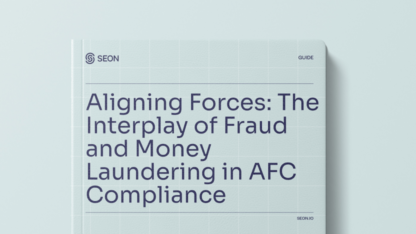In April 2025, cybercriminals breached thousands of Australian superannuation accounts by exploiting stolen credentials. The attackers didn’t need to hack databases; they simply reused leaked passwords, ultimately stealing over $500,000 from unsuspecting members.
This method, known as credential stuffing, is fast becoming one of the most effective and underestimated cyber threats facing individuals and businesses alike. In this article, we break down how these attacks work, why they’re so dangerous, and the best practices organizations should adopt to defend against them.
What Is Credential Stuffing?
Credential stuffing is a type of cyberattack in which criminals use stolen usernames and passwords, usually obtained from previous data breaches, to try to access accounts on other platforms. The logic is simple: if people reuse the same credentials across multiple sites, those reused logins become keys to more valuable digital doors.
Armed with automation tools, attackers deploy bots to flood login forms or APIs with vast lists of credential pairs, looking for matches. When they find one, they can hijack the account, bypassing authentication altogether.
What makes this tactic so dangerous is that the original breach doesn’t even need to involve the targeted service. If a low-priority account — say, an old forum login — is compromised, it can still lead to an account takeover on something far more critical like an online bank, a retail wallet or an internal business system.
From there, attackers can scrape sensitive personal information, make unauthorized purchases or pivot further into an organization’s network. The entire process hinges on a common human behavior: reusing passwords.
SEON helps you spot suspicious login behavior in real time, so you can block fraudsters using stolen credentials, without adding friction for trusted users.
Speak with an Expert
How Do Credential Stuffing Attacks Work?
Credential stuffing attacks rely on scale, automation and the all-too-common habit of password reuse. Most of the credentials used in these attacks won’t succeed, but with millions of attempts launched in minutes through sophisticated bot attacks, even a 0.1% success rate can lead to thousands of compromised accounts.
Here’s how these attacks typically unfold:
- Access to leaked credentials: Attackers obtain usernames and passwords from previous breaches, often traded or sold on dark web marketplaces.
- Automation tools: They load these credentials into bot software designed to test them at scale on login pages or APIs.
- Spoofing tactics: To avoid detection, bots rotate IP addresses, user agents and device fingerprints, simulating real user behavior.
- Targeted logins: The bots flood login forms with attempts across multiple websites, hoping to find a match.
- Targeted account takeover: Once a match is found, attackers gain access to the account, which can be used for financial fraud, data theft or to launch further phishing campaigns.
- Secondary exploitation: Even non-financial accounts can be valuable. Compromised emails or business tools, for example, may grant access to sensitive data or open the door to more sophisticated social engineering attacks.
How Does It Affect Your Organization?
Credential stuffing attacks don’t just affect individual users — they also create serious consequences for organizations. When attackers gain access to customer accounts on your platform, the fallout can be costly across multiple dimensions:
- Reputational damage: Customers affected by account takeovers may blame your platform for failing to protect them, even if the credentials were stolen elsewhere. The resulting backlash can erode trust and drive users away.
- Operational disruption: Your teams must act fast to investigate the breach, assist impacted users and patch potential vulnerabilities. All of this pulls resources from core business functions and can stretch your support, security and engineering teams thin.
- Regulatory risk: Failing to prevent unauthorized access can trigger scrutiny under laws like the GDPR or CCPA. If authorities find gaps in your data protection strategy, your organization could face significant fines or legal action.
- Negative publicity: Credential stuffing incidents, especially when tied to financial loss or privacy violations, can quickly become headline news. This kind of attention often brings long-term brand damage.
In short, the cost of inaction is high. Credential stuffing may not always start with your organization, but if it ends there, you’ll be the one cleaning up the mess. Proactive defense is your best chance to protect users, maintain compliance and safeguard your reputation.
How to Defend Against Credential Stuffing
Credential stuffing may exploit reused passwords, but stopping it requires more than just strong credentials. Today’s attacks are fast, automated and increasingly sophisticated, so defense strategies must be equally adaptive and intelligent.
For consumers, good password hygiene and enabling multi-factor authentication (MFA) offer the first line of protection. But for businesses, particularly those targeted by automated bot attacks, stopping credential stuffing demands a layered and data-driven approach.
Multi-factor authentication and CAPTCHAs remain two of the most effective tools in slowing down or stopping automated login attempts. By requiring users to verify their identity or prove they’re human, they break the automation loop that bot operators rely on.
On the backend, advanced device intelligence plays a critical role. By gathering information on the devices used to connect to your platform, you can detect when seemingly different accounts share suspiciously similar attributes, like the same screen resolution, language settings or browser extensions. This helps identify bots and emulated environments designed to bypass simpler controls.
Bot detection systems enhance this further by identifying high-volume, low-variance behaviors typical of credential stuffing tools. When combined with velocity checks, which flag actions like rapid login attempts or instant fund transfers, these tools offer real-time signals of fraud in progress.For organizations facing persistent threats, machine learning can take defenses to the next level. By analyzing historical login patterns and past attacks, algorithms can detect subtle anomalies, surface repeat behaviors and recommend preventive rules before the next attempt succeeds.
How SEON Helps Prevent Credential Stuffing
SEON equips businesses with the real-time tools they need to stop credential stuffing at the source, before it leads to account takeovers or reputational damage, positioning it as a leading bot detection software. Our solution combines device intelligence, behavior analytics and machine learning to detect even the most subtle signs of automated attacks.
- Device Intelligence: SEON captures and analyzes hundreds of device and browser data points to build a detailed fingerprint of each user session. This helps identify spoofed environments, virtual machines and connections from suspicious IPs or high-risk geographies, key indicators of credential stuffing bots.
- Velocity Checks: By setting up custom risk rules and monitoring the speed and frequency of user actions across the customer journey, SEON can catch rapid-fire login attempts, instant password changes or multiple failed authentications in a short timeframe, all indicative of potential bot attacks.
- Machine Learning: SEON’s adaptable machine learning models continuously learn from new fraud signals and historical attack patterns. This allows you to uncover credential stuffing attempts that would otherwise slip through rule-based systems, especially when fraudsters finetune their tactics to mimic legitimate users.
Frequently Asked Questions
Credential stuffing is a type of brute force attack, but the two differ in method. In a brute force attack, hackers use automation to guess passwords for known usernames or emails. Credential stuffing, on the other hand, involves attackers using already leaked or stolen username-password pairs to try logging into multiple accounts, banking on users reusing credentials across platforms. Both tactics involve a high volume of login attempts with the goal of gaining unauthorized access.
Credential stuffing has become one of the fastest-growing cyber threats, with attackers increasingly exploiting reused passwords from past data breaches. Recent cases, such as the 2025 superannuation breach in Australia, show just how widespread and damaging these attacks have become—impacting thousands of accounts and leading to major financial losses.
Credential stuffing is hard to detect because it mimics real user behavior and uses valid credentials. Attackers rely on bots, IP spoofing, and automation to scale login attempts, often bypassing basic security. Without advanced detection tools like device fingerprinting or velocity checks, businesses struggle to differentiate between fraudsters and legitimate users.








